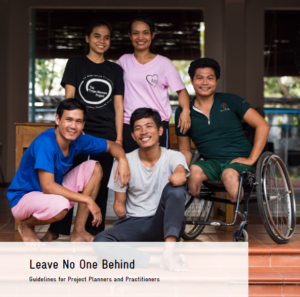Leave No One Behind – Guidelines for Project Planners and Practitioners
 The imperative to “Leave No One Behind” (LNOB) has become a buzzword in the field of international development cooperation. It has been described in many ways by politicians, experts, lobbyists and journalists – as a vision, a principle, a pledge etc. – to ensure that all people are taken along on the path to sustainable development. As a guiding principle of the 2030 Agenda for Sustainable Development, adopted by the UN General Assembly in 2015, LNOB shines the spotlight on the poorest and most vulnerable people and calls for all stakeholders to intensify their efforts to narrow existing gaps between population groups. However, while much time has been spent on conceptualizing and defining what LNOB means, there is still a remarkable gap of knowledge when it comes to implementation experiences.
The imperative to “Leave No One Behind” (LNOB) has become a buzzword in the field of international development cooperation. It has been described in many ways by politicians, experts, lobbyists and journalists – as a vision, a principle, a pledge etc. – to ensure that all people are taken along on the path to sustainable development. As a guiding principle of the 2030 Agenda for Sustainable Development, adopted by the UN General Assembly in 2015, LNOB shines the spotlight on the poorest and most vulnerable people and calls for all stakeholders to intensify their efforts to narrow existing gaps between population groups. However, while much time has been spent on conceptualizing and defining what LNOB means, there is still a remarkable gap of knowledge when it comes to implementation experiences.
Against this background, the present Guidelines aim to fill important knowledge gaps on LNOB implementation in international development cooperation, based among other things on the knowledge and experience of 11 selected inspiring projects (case studies) operating in four world regions. A series of key recommendations targeting project planners and practitioners represents a synthesis of the main results of the project reviews conducted during preparation of these Guidelines. In addition, the Guidelines provide concrete suggestions for the integration of LNOB into the project cycle and into capacity development. Other than that, the work adresses the identification of best practices and captures lessons learned.
The full version of the report (PDF) includes all identified approches and case studies, while the synopsis (PDF) provides a selective overview of concepts and tools that are highly relevant to the work of LNOB-sensitive project planners and practitioners.
Leave No One Behind – Guidelines for Project Planners and Practitioners (Full Version)
Leave No One Behind – Guidelines for Project Planners and Practitioners (Synopsis)
